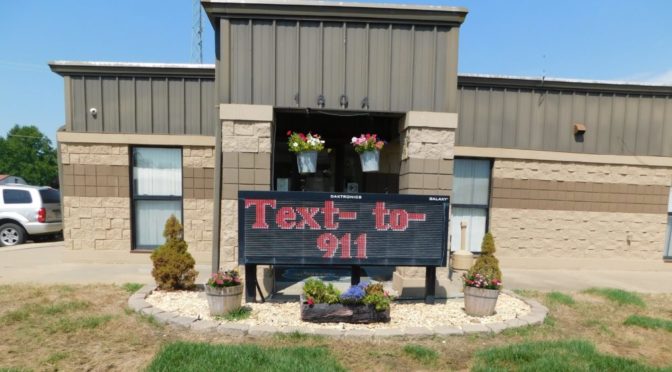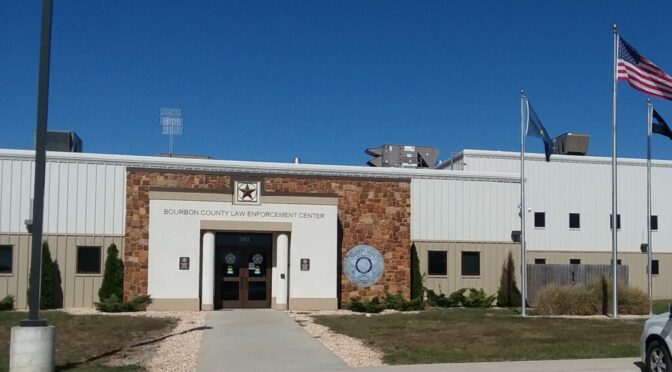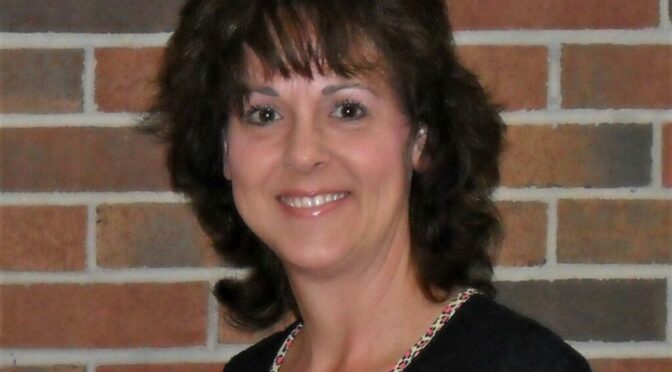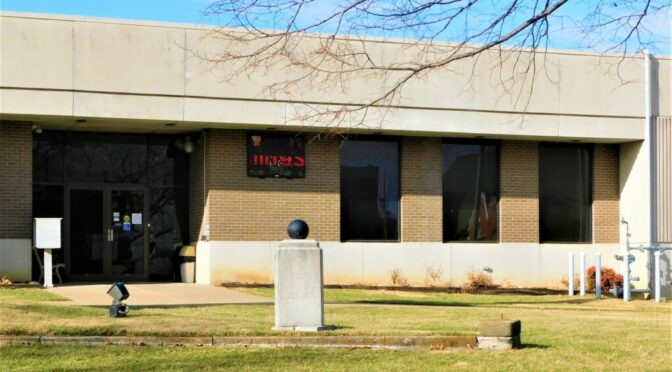Monthly Archives: February 2022
The Bourbon County Sheriff’s Office Daily Reports Feb. 7
Groundhog Fatty Jacky by Carolyn Tucker
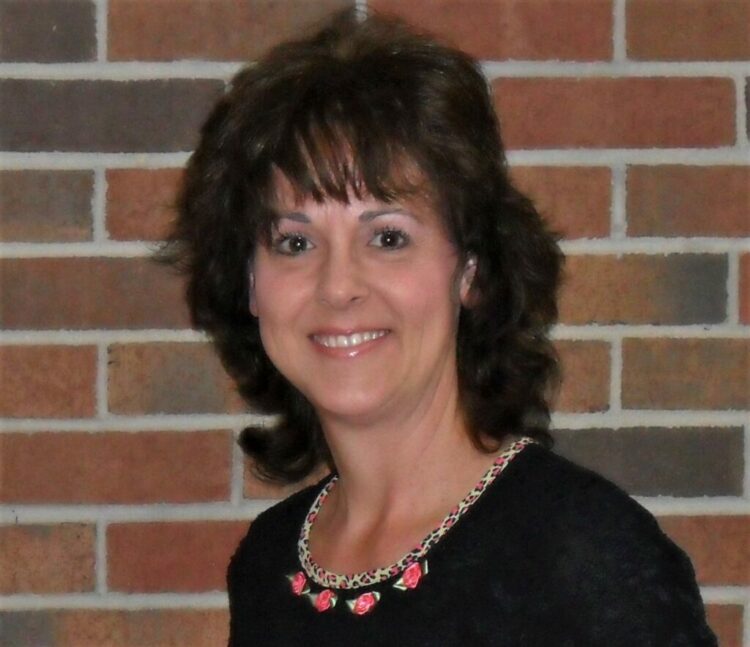
Keys to the Kingdom
On a warm fall afternoon, I was relaxing while reading in the pergola. I was totally focused on the book, and not paying a lick of attention to my surroundings, when I heard the pitter-patter of feet on the flooring. I looked up just in time to see a groundhog quickly trot right by me. He was as cute as he was fat — I guess he’d been stocking up on lard so he could hibernate nicely through the winter. This wasn’t the first time I’d spotted him on my property, but I’d never laid eyes on him this close. While visiting with my daughter about my pet groundhog, I mentioned that I wanted to name him. She suggested Fatty Jacky (a nutty character from the crazy Jerry Lewis movie, “The Disorderly Orderly.“) Since we both guffawed, I knew that was the perfect name for him!
As believers, being asleep at the wheel (not paying attention to our spiritual walk) is very dangerous. God’s Word warns us to stay alert and keep a sharp lookout. Since I wasn’t paying attention to what was going on, Fatty Jacky was able to sneak up on me from “out of nowhere.” However, if I’d been keeping a close watch, I would have seen him coming way before he arrived at the pergola. “Stay alert! Watch out for your great enemy, the devil. He prowls around like a roaring lion, looking for someone to devour. Stand firm against him, and be strong in your faith” (1 Peter 5:8,9 NLT). Just as lions go after the feeble, the young, and the stragglers, the devil looks for those who are isolated, weak, or totally unfocused on God so he can devour/destroy them.
The author of the Book of Hebrews gives Christians practical ways to stay alert. “Our great desire is that you will keep on loving others as long as life lasts, in order to make certain that what you hope for will come true. Then you will not become spiritually dull and indifferent“ (Hebrews 6:11,12 NLT). We’re reminded that loving people will help guard against growing disinterested and becoming spiritual sluggards in our Christian walk. Jesus doesn’t call believers to be passive followers, He calls us to be passionate followers.
There are so many distractions in today’s world. When I fire up my computer, all kinds of stuff pops up. If I’m not determined to stay focused on my goal, I can get side-tracked looking at junk I don’t even want to see or read. The same thing can happen to believers in their spiritual life. It’s imperative not to just go with the flow, ignore God’s Word, or disregard plain ol’ common sense. “This is why it is so crucial that we be all the more engaged and attentive to the truths that we have heard so that we do not drift off course” (Hebrews 2:1 TPT).
“We must keep our eyes on Jesus, who leads us and makes our faith complete” (Hebrews 12:2 CEV). The hymn, “Turn Your Eyes Upon Jesus,” composed by Helen H. Lemmel bears the truth of this scripture with these lyrics: “Turn your eyes upon Jesus; look full in His wonderful face. And the things of earth will grow strangely dim in the light of His glory and grace.”
The Key: Keep your eyes peeled so you won’t be devoured by the devil or get run over by a groundhog.
Tough Years by Gregg Motley
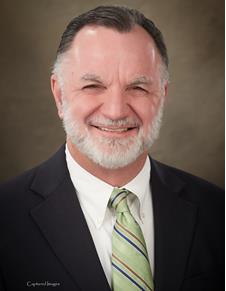
The last two years have been difficult for Bourbon County, along with most of rural America, especially for the 45 residents we lost to COVID19 and their families.
According to the Kansas Statistical Abstract (“Abstract”) released in September, the pain is economic as well as personal. Perusing the Abstract, here are some notable trends that indicate the stress under which we have all lived in the last two years:
Beginning with money and banking, our nationwide economy has been awash in cash due to the stimulus checks and deficit spending coming out of Washington D.C.
Accordingly, bank deposits grew by 15.9% in Kansas during 2020; by comparison, Bourbon County bank deposits grew by only 9.1%. This is indicative of how Federal spending disproportionately favors urban areas.
Another important indicator of economic success is spending within our county, primarily indicated by a measure called Trade Pull Factor. This measures the amount of money spent in Bourbon County compared to the income earned by its residents.
Over the last six years, we have hovered around the 70% level, meaning that for every dollar earned by a resident, 70 cents are spent in our county; this includes nonresidents who spend their money here while visiting. This measure dropped to 68% in 2020; the logical explanation is that we have had fewer visitors. The number also indicates that we have an opportunity to evaluate our own spending habits, and consider spending more of our disposable income in our county; it benefits us all.
Employment numbers continue to be difficult for us. The Bourbon County unemployment number jumped from 4.2% in 2019 to 5.6% in 2020.
Why did we have so many help wanted ads alongside so many unemployed people? One can only conclude that some decided that they could live off stimulus money. Hopefully, our unemployment numbers will move in the right direction when the money out of Washington D.C. slows down to a gush. Current numbers indicate we are a still a net importer of workers.
After making some significant gains in per capita personal income in prior years, the Bourbon County growth rate in 2019 slowed to 2.4% compared to a statewide number of 4.2%. Given our continued demand for additional workers, I am hopeful the growth in personal income in the county will get back on track.
One positive trend that continued into 2019 is the drop in the county’s poverty rate. This rate peaked in 2017 at 18.3% of Bourbon County residents; that rate has continued to fall to 15.4% in 2019. It will be interesting to see how COVID19 affects this number in 2020 and 2021.
These numbers can be difficult to wade through, but it is important for us to understand the trends in order to propose effective solutions. Bourbon County REDI is committed to staying informed in order to be a part of the solution.
K-State Ag Meetings Offered
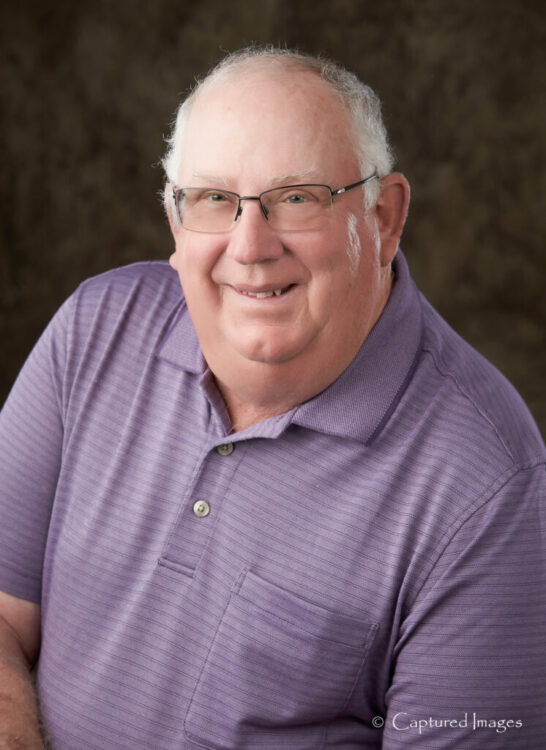
The Southwind Extension District will host a free information meeting on Old World Bluestem at the Bressner Hall on the Woodson County Fairgrounds on February 16, 2022 at 2:30 p.m..
Old World Bluestems are a group of introduced grasses into the United States in the late 1920’s as improved grasses. While these grasses are called bluestems they are not closely related to Big Bluestem or Little Bluestem. Old World Bluestem are survivors of centuries of overgrazing. They are drought tolerant, aggressive, and prolific seed producers which sounds great until you add they are unpalatable to livestock in relation to our desired native grasses. They can become invasive anytime our natives species are stressed.
Dr. Walt Fick, Kansas State University Range Specialist, will discuss identification and control of Old World Bluestem. Also on the program will be Jarrod McVey, Woodson County Noxious Weed Director, discussing ways his department can help you with your noxious weed problems.
Beef/cow/calf Risk Management
The Southwind Extension District will be hosting Beef Cow/Calf Risk Management meeting on February 23, 2022 , at 5:30 at two locations. This is a hands-on evening workshop that will teach principles of determining cost of production for a cow/calf operation. Learn strategies for cattle marketing, and insurance products for price risk management. Participants will work with a case farm to apply these topics to a real-world cattle operation. The goal is for participants to acquire risk management skills they can apply directly to their own operations.
Registration fee is $15, payable that night. To guarantee a meal and informational packet call the Southwind Extension in Yates Center 620-625-8620 to register.
The Iola location is at the Southwind Extension Office at 1006 N. State Street in Iola. Fort Scott location is at Healthy Bourbon County Action Team Office at 104 N. National Ave in Fort Scott. Dinner will start at 5:30 pm with the program starting at 6:00. Program is scheduled to end at 8:30 pm
# # #
FS Commissioner Pete Allen: Street Maintenance Plan, A Roadmap Forward
Submitted by Fort Scott City Commissioner Pete Allen.
When a group of about 70 people comes in for a family reunion, take the trolley ride and the thing that sticks out most in their mind is the bumpy streets, something is wrong!
When 3 people from out of town do a survey of FS for a group called “First Impressions” and when asked what you will remember most about FS after 30 days, the answer of 2 out of 3 is “the bumpy streets”, something is wrong! That is unless you like bumpy streets.
General
This summary is a brief and concise summary of the findings, conclusions, and recommendations for a proposed City of Fort Scott Street Multi-Year Special Maintenance Plan.
Findings
The city operates and maintains approximately 83 miles of streets. Most of the streets are beyond their life cycle and require moderate to major maintenance to prevent further deterioration and require major construction for correction.
Funding for street work is projected to come from a recently enacted one
percent County sales tax, a 1% City sales tax (1986) and a half percent City
sales tax along with a State Gasoline Tax. This is supplemented by
connecting link payment of approximately $12,500.
With the cost of street improvements (rebuild) estimated to be in the $140
M range, the overall time frame for those improvements would be 62
years.
There is no ordinance preventing us from applying the asphalt mixture to
existing brick streets. In fact, it has become common practice.
Fort Scott’s brick streets have been laid over existing soil consisting of black
dirt, clay or clay/rock mixtures with about a 1” layer of sand and these
streets do not meet the requirements for present day traffic loads.
It was recently learned, by me, that in the 1990’s an attempt to discover
the cost of rebuilding (major reconstruction) of our brick streets was
undertaken. A section of Eddy Street south of 9th Street was chosen for the
study. As reported to me, the bricks were removed, curb and gutter was
poured, and a concrete base was installed. Then the bricks were re-laid.
Detailed job costs were kept, and the consensus result was that it would be
cost prohibitive to rebuild them. No other attempt was made to rebuild. I
believe that it was then decided on the procedure of overlaying the brick
streets.
No further attempt should be made to overlay with asphalt, any of the
remaining unpaved brick streets.
Typical base under existing Brick Streets
Total cross section is approximately 5”
Typ. cross section of modern engineered roadway for comparative
purpose
6” of compacted earth
8” of AB-3 Base Rock
10” of hot mix asphalt
Total cross section thickness is 24”
• Generally, these brick streets have failed as the result of heavy loads being
driven over them and they would fall into a classification as “unrepairable” with
75 to 80 percent of our streets falling into this classification.
• On a scale of 1 to 10, with 10 being the highest, our streets would rate (PCI) at
about a 3.5 average meaning they are full of potholes, sunken areas, and other
conditions that would make them nearly impassable.
• Each year with the continued infiltration of moisture and heavy loads they
continue to deteriorate and each year at an accelerated rate over the previous
year.
Recommendations
A decision now must be made to shift from the street re-construction
schedule to a more proactive maintenance program, performing low to
moderate cost, high impact maintenance activities which increase the
Pavement Condition Index (PCI) on streets requiring minimal to moderate
maintenance to gain service life.
While maintenance projects and activities are not as glamorous, these
efforts will provide an economical means of extending the life to major
investments in the street network.
As a result of that shift, improvements will be made to the driving surfaces
in the overall street network.
This proactive maintenance program should continue, as the most
economical means to maintain and improve the street network with the
available funding.
The rebuilding of streets should not be suspended, only scaled back to
properly fund needed maintenance to protect the community’s previous
investments in street infrastructure.
This plan attempts to provide a balanced approach and cost-effective
measures to increase the PCI score and improve our street drivability.
With implementation, all classifications of streets will meet or exceed an
average PCI goal of 5 over the next seven to ten years.
Examples of maintenance activities include pothole repair, sections of
nonrepairable asphalt and bricks replaced with asphalt, skim patching,
alligator cracking repairs, crack filling, chip sealing, and broken concrete
repairs.
It is imperative that we make our existing streets as “drivable” (min. PCI of
5) as possible at the lowest cost, as they must be used by the motorists
until such time as they can be reconstructed.
We do not have the financial resources to rebuild the nearly 700 blocks of
our unrepairable streets. At the average rate of even $200K per block, that
sum equals $140M dollars.
With the advent of our pothole patching machine, using proper aggregate
and asphalt emulsions and training in the proper techniques, we are now
able to use the machine for performing the above-described process.
The downtown historical district would be designated for complete brick
street restoration, as well as selected other isolated areas, such as 5th
Street by the Old Church and 3rd Street by Eugene Ware School, with other
areas deemed historic by the governing body.
These areas would not be included in this Street Maintenance Program but
would be funded from a Brick Street Fund taken from the sales tax revenue.
A $200,000 yearly fund would be established for that purpose.
Note that areas outside the historic district could remain brick by the
establishment of a benefit district upon approval by 80% of adjoining
property owners.
City would be responsible for standard reconstruction with adjoining
property owners responsible for additional cost for replacing bricks. No
particular priority would be given these streets to fit in the 62 years rebuild
program.
All other areas would be included in the Street Maintenance Program
subject to maintenance procedures as described above.
This would include the buildup of missing and sunken areas with the
pothole patching machine and materials.
Standard chip seal would be used as part of street maintenance for streets
such as Liberty Bell Road and sections of Horton Street.
Following the improvement methods described above, standard chip seal
methods would be utilized for additional leveling and preservation. County
has equipment for chip sealing and is available for cost sharing.
Mill and overlay would be classified as street maintenance and would
include Broadway and 6th Streets. Such streets would be reconstructed if
grants would become available.
The “like for like” “materials as described in Ord. 12.12.090 – Restoration to
original condition” would be discontinued and the installation of hot-mix
asphalt in excavations in streets listed in the “unrepairable” classification
with cold-mix as a temporary material when hot-mix would be unavailable.
Continuance of the requirements in Ord. 12.12.090 would be enforced in all
street and alley excavations (excavation and backfill).
Approximate cost of treatment is estimated to be $5,000 per block on
average with the goal of 100 blocks treated per year ($500,000). This
would compare to an estimated cost of $200,000 per block, or $20M for
the 100 blocks.
Yearly material usage requirements would be approximately 14,000 gallons
of emulsion and approximately 600 tons of ½” chips ($48,000).
A heated upright 7,000-gallon emulsion storage tank would need to be
purchased and erected at the City Facility. Note: This tank was authorized
and ordered at the commission meeting of Feb. 1, 2022. This tank
compliments the initial purchase of the Total Patcher machine at the cost of
$68,000 and will allow us to manufacture our own patching material for the
above-mentioned maintenance activities. Training in the use and proper
care of the machine was performed in May of 2021. Nine public works
employees were trained
Obituary of Melissa Mitchell

Melissa Lynn Hays-Mitchell, 48, left our world unexpectedly on Dec 21, 2021. Melissa was born on July 4, 1973, to James Hays and Joann Sipe Hays in Fort Scott, Kansas. She graduated from Fort Scott High School in 1991, and continued her education at Pittsburg State University, earning her bachelor’s degree in social work.
She was preceded in death by both of her parents.
Melissa’s beloved spouse, Dean Zimmerman also left our world on December 21, 2021.
Continued prayers for both families are appreciated.
She was previously married to Jerald Mitchell (Fort Scott) for 18 years, they raised three children together. Dayton, Dawson, and Katelynn Mitchell were always their mother’s world. Please keep them in your thoughts and prayers while they navigate through this difficult time.
Left behind are her three children: Dayton Hays (Jessica Powers) Mitchell, Dawson James Mitchell, and Katelynn (Taylor Harrison) Mitchell. She also leaves behind a brother Jason Hays, and sister Sheila Hixon (Robert Hixon).
Besides her own children, Melissa’s pride and joy lay with her grandchildren. This Mimi never missed a beat and will be missed by them all: Bryant, Bentley, Kinsley, Hayden, Brayden, Kase, and Dylynn. She also leaves behind several nieces and nephews.
As a caring mother, wife, and grandmother, Melissa never knew a stranger and lived on her own terms. Her funny wit, intelligent comments, and unique personality are what those who knew her will miss the most. She was one of a kind, unapologetically being herself when it came to what she believed in.
A celebration of Melissa’s life will be at Buck Run Community Center on Saturday, February 26th, 2022, at 1:00 PM. Please feel free to stop by and share your memories of Melissa with her family and close friends.
Chamber Announces Love Local & Chocolate Crawl Shopping Event
The Fort Scott Area Chamber of Commerce announces a Love Local & Chocolate Crawl shopping event will take place on Saturday, February 12th.
Most stores in the Downtown Historic District and several additional locations will be participating in the fun.
Customers are invited to shop local retailers while sampling a variety of chocolate treats along the way, and many will also be offering drawings and promotions.
Locations included in the event will have a Chocolate Crawl poster and red and white balloons displayed at their entrance.
The Chamber encourages the community to shop local, love local and join the Chocolate Crawl on February 12th to celebrate Valentine’s Day.
“You can’t buy love, but you can buy local!”
Contact the Chamber for more information at 620-223-3566
Prom Dress Event Rescheduled Due to Storm
We apologize for the inconvenience of a re-schedule but we want this to be a positive experience for everyone, seller and buyer.
Bourbon County Commission Agenda for Feb. 8
Agenda
Bourbon County Commission Room
1st Floor, County Courthouse
210 S. National Avenue
Fort Scott, KS 66701
Tuesdays starting at 9:00
Date: February 8, 2022
1st District-Lynne Oharah Minutes: Approved: _______________
2nd District-Jim Harris Corrected: _______________________
3rd District-Clifton Beth Adjourned at: _______________
County Clerk-Ashley Shelton
MEETING HELD IN THE COMMISSION ROOM
Call to Order
• Flag Salute
• Approval of Minutes from previous meeting
• Eric Bailey – Road and Bridge Report
• Mowing & Snow Removal Bids for Medical Building
• County Counselor Comment
• Susan Bancroft, Finance Director Comment
▫ Ascension Via Christi 1 year Lease Agreement Renewal
▫ State Setoff Agreement
• Public Comment
• Elected Officials Comment
• Commission Comment
Justifications for Executive Session: KSA 75-4319(b)(1) To discuss personnel matters of individual nonelected personnel to protect their privacy KSA 75-4319(b)(2) For consultation with an attorney for the public body or agency which would be deemed privileged in the attorney-client relationship KSA 75-4319(b)(3) To discuss matters relating to employer-employee negotiations whether or not in consultation with the representative(s) of the body or agency KSA 75-4319(b)(4) To discuss data relating to financial affairs or trade secrets of corporations, partnerships, trust, and individual proprietorships KSA 75-4319(b)(6) For the preliminary discussion of the acquisition of real property KSA 75-4319(b)(12) To discuss matters relating to security measures, if the discussion of such matters at an open meeting would jeopardize such security measures.
Attachments:
KDHE Amends Travel Related Quarantine List
TOPEKA – The Kansas Department of Health and Environment (KDHE) has amended its travel quarantine list to remove the country of Aruba. The country of Faroe Islands has been added to the travel quarantine list. An unvaccinated individual who has not had COVID-19 within the last 90 days or those that have not received all the recommended vaccine doses, including boosters and additional primary shots, should quarantine if they meet the following criteria:
- Traveled between Jan. 21 and Feb. 4 to Aruba.
- Traveled on or after Feb. 4 to Faroe Islands.
- Attendance at any out-of-state or in-state mass gatherings of 500 or more where individuals do not socially distance (6 feet) and wear a mask.
- Been on a cruise ship or river cruise on or after March 15, 2020.
The length of a travel-related at home quarantine is 5 days after your last exposure with an additional requirement to wear a well-fitting mask indoors and outdoors when around others for an additional 5 days. If you cannot mask, at-home quarantine is recommended for 10 days. Quarantine would start the day after you return to Kansas or from the mass gathering. If you do not develop symptoms of COVID-19 during your quarantine period, then you are released from quarantine. Regularly check this list to stay up to date on travel-related guidance. Please refer to the KDHE Isolation and Quarantine FAQ for additional information.
For those traveling internationally, the Centers for Disease Control and Prevention (CDC) is requiring testing within three days of flights into the U.S. For further information on this and other requirements, visit their website.
For those who meet the following criteria do NOT need to quarantine:
- You are up to date with your COVID-19 vaccines. This means that you are ages 5 or older and have received all recommended vaccine doses, including boosters and additional primary shots for some immunocompromised people when eligible.
- You had confirmed COVID-19 within the last 90 days (meaning you tested positive using a viral test).
Persons who do not meet the above criteria should continue to follow current quarantine guidance for travel or mass gatherings.
The travel quarantine list is determined using a formula to evaluate new cases over a two-week period, then adjusted for population size to provide a case rate per 100,000 population. This provides a number that can then be compared to the rate in Kansas. Locations with significantly higher rates — approximately 3x higher — are added to the list.
For more information on COVID-19, please visit the KDHE website at www.kdhe.ks.gov/coronavirus.
Letter to The Editor: Drew Talbott

Submitted by Drew Talbott, President Ascension Via Christi Hospital, Pittsburg
Here to serve for as long as we are needed
Noble Health recently announced its plans to open an inpatient hospital in Fort Scott, but without a concrete timeline.
Since February 2019, we have provided Fort Scott residents with vitally needed emergency, imaging, lab, and primary care services and our plan is to continue to do so as long as our services are needed.
We stepped in to fill the gap created when Mercy Hospital closed its doors on Dec. 31, 2018. We did so because ensuring access to close-to-home care is in keeping with our mission as a non-profit Catholic healthcare system.
Like other health systems, we recognized that the patient volumes were not sufficient to sustain a full-service community hospital. However, as a department of our Ascension Via Christi Hospital in Pittsburg, we have demonstrated that we could operate an ER and supporting services in a financially sustainable manner.
So in partnership with the community, we launched a new model of care and over the past three years have made a significant investment in the imaging and laboratory equipment needed to maintain a 24/7 physician-led Emergency Department.
Today, we have a self-supporting model of care. More importantly, we witness every day the importance of our caregivers’ contribution to patients and families and to the growth and development of the community.
We support Bourbon County leaders’ desire to explore the viability of returning to a community hospital model. However, based on our lived experience as the community’s emergency care provider, we believe the volumes are too low to sustain a community hospital without federal or local taxpayer funding.
We plan to continue to offer our services in Fort Scott for as long as there is an unmet need.
Rest assured, we came to Fort Scott to support our neighbors in their time of need and that commitment will not change.
